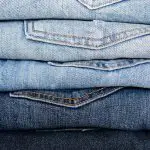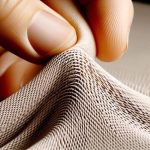Are you interested in sustainable fashion? Do you want to make more conscious choices when it comes to the fibers used in your clothing? If so, you may have heard of Tencel and viscose as two sustainable cellulose fibers commonly used in the textile industry.
Tencel and viscose are both derived from wood pulp, making them attractive options for those looking for eco-friendly alternatives to synthetic fibers. However, there are differences between the two fibers that can impact their environmental impact, manufacturing processes, performance characteristics, and cost.
In this article, we will explore the similarities and differences between Tencel and viscose to help you make an informed decision when choosing sustainable fibers for your clothing.
Table of Contents
Overview of Sustainable Cellulose Fibers
Let’s take a look at the overview of sustainable cellulose fibers, shall we? These fibers are made from materials that are renewable, biodegradable, and have a low environmental impact. Sustainable cellulose fibers are becoming increasingly popular in the textile industry as people become more aware of the need to reduce their carbon footprint.
Two of the most popular sustainable cellulose fibers are Tencel and Viscose. Tencel is a brand name for a type of lyocell fiber that’s made from sustainably harvested eucalyptus trees. It’s known for its softness, breathability, and ability to absorb moisture.
Viscose, on the other hand, is a generic name for a type of rayon fiber that’s made from wood pulp, bamboo, or other natural sources. While viscose is also a sustainable fiber, it’s not as environmentally friendly as Tencel because of the chemicals used in its production.
Overall, sustainable cellulose fibers are a great alternative to synthetic fibers that are made from non-renewable resources. They’re biodegradable, have a low environmental impact, and are often more comfortable to wear than synthetic fibers. When choosing sustainable cellulose fibers, it’s important to consider the specific type of fiber and the production process used to make it to ensure that it meets your sustainability goals.
Environmental Impact
You might be surprised to learn about the significant differences in their environmental impact. Tencel is considered one of the most environmentally friendly fibers in the market. The production process of Tencel fibers uses a closed-loop system that recycles up to 99% of the solvent used, making it a highly sustainable option. Additionally, Tencel is made from eucalyptus trees, which require less water and land than cotton.
On the other hand, viscose has a much higher environmental impact. The production process of viscose fibers involves the use of toxic chemicals, such as carbon disulfide, which can have negative effects on both the environment and workers. The extraction of the wood pulp used to make viscose can also lead to deforestation and land degradation, contributing to the loss of biodiversity.
It is important to note that some viscose fibers are produced using more sustainable methods, such as the use of bamboo or recycled materials. However, it is essential to research the sourcing and production methods of the viscose you are purchasing to ensure it aligns with your sustainability values.
Overall, when comparing Tencel vs viscose, Tencel is a much more sustainable option with a significantly lower environmental impact.
Manufacturing Processes
Imagine the impact of the manufacturing processes on our planet and how we can make a difference by choosing eco-friendly options. When it comes to manufacturing Tencel and viscose, there are some notable differences.
Tencel is produced through a closed-loop process, which means that the solvents and water used in the manufacturing process are recycled and reused. This makes the process more sustainable and eco-friendly.
In contrast, the manufacturing process of viscose involves the use of harsh chemicals like sulfuric acid, which can cause damage to the environment if not disposed of properly.
Here are four things to keep in mind when comparing the manufacturing processes of Tencel and viscose:
-
Tencel is produced using a closed-loop process, which means that the solvents and water used in the manufacturing process are recycled and reused. This makes the process more sustainable and eco-friendly.
-
The manufacturing process of viscose involves the use of harsh chemicals like sulfuric acid, which can cause damage to the environment if not disposed of properly.
-
Tencel is produced from sustainably grown eucalyptus trees, which require less water and pesticides than other crops like cotton.
-
Viscose is often made from trees that are not sustainably grown and can contribute to deforestation if not sourced responsibly. This makes Tencel a more eco-friendly option for those looking to make a positive impact on the environment.
By choosing Tencel over viscose, you can make a conscious effort to reduce your carbon footprint and support sustainable manufacturing practices. The manufacturing process of Tencel not only supports the use of responsibly sourced materials, but it is also more eco-friendly. So, next time you’re deciding between Tencel and viscose, think about the impact your choice can have on the environment.
Performance Characteristics
Discover the unique properties and benefits of these plant-based fabrics. Tencel and viscose both have their own set of performance characteristics that make them ideal for different applications. Tencel is known for its strength and durability, making it a great choice for clothing that needs to withstand wear and tear. It is also moisture-wicking and comfortable to wear, making it a popular choice for activewear and outdoor clothing.
Viscose, on the other hand, is known for its softness and drape, making it ideal for clothing that needs to flow and move with the body. It is also highly absorbent, making it a great choice for clothing that needs to be breathable and comfortable in hot weather. However, viscose is not as strong as Tencel and can be prone to pilling and shrinkage if not cared for properly.
To emphasize the differences between Tencel and viscose, here is a table comparing their key performance characteristics:
| Performance Characteristics | Tencel | Viscose |
|---|---|---|
| Strength and Durability | High | Moderate |
| Moisture-wicking | Yes | No |
| Softness and Drape | Moderate | High |
| Absorbency | Moderate | High |
As you can see, both Tencel and viscose have their own unique performance characteristics that make them suitable for different types of clothing. When deciding between the two, it’s important to consider the specific requirements of your garment and choose the fabric that will best meet those needs.
Cost Comparison
Take a moment to picture the price tags on your favorite clothing items and consider which fabric may have been more cost-effective to use in their production.
When it comes to cost comparison between Tencel and Viscose, it’s important to note that both materials have similar production processes and are made from sustainable sources. However, Tencel typically has a higher price point due to its superior quality and durability.
Viscose, on the other hand, is a more affordable alternative to Tencel. It’s commonly used in fast fashion due to its low cost and versatility. However, it’s important to note that Viscose has a tendency to shrink and lose its shape after washing, which can ultimately result in a shorter lifespan for the garment.
Overall, the cost comparison between Tencel and Viscose ultimately depends on the intended use of the fabric. If you’re looking for a more sustainable and long-lasting option, Tencel may be worth the investment. However, if you’re looking for a more affordable option for fast fashion or temporary items, Viscose may be a better choice. Remember to consider the lifespan and quality of the garment when making your decision.
Considerations for Choosing a Sustainable Fiber
When considering sustainable fibers for textiles, it’s important to keep in mind the potential for further innovation in the industry.
New technologies and processes may lead to even more eco-friendly fibers in the future.
Additionally, as a consumer, your choices can make a significant impact on the textile industry’s sustainability efforts.
By choosing sustainable fibers and supporting brands that prioritize sustainability, you can help drive positive change in the industry.
Potential for Further Innovation
Although tencel and viscose already offer sustainable options for the textile industry, further innovation could lead to even more environmentally friendly options. As technology and research advances, there’s potential for the development of new fibers that have an even lower environmental impact.
Here are some potential areas for further innovation:
-
Alternative raw materials: Currently, both tencel and viscose are derived from wood pulp. However, there may be alternative materials that could be used as a base for sustainable fibers. For example, agricultural waste products such as banana or pineapple leaves could potentially be used to create fibers.
-
Closed-loop production: Tencel already uses a closed-loop production process, which minimizes waste and water usage. However, there is potential for further improvements in this area. Viscose production, on the other hand, can result in toxic chemicals being released into the environment. Developing a closed-loop process for viscose production could greatly reduce its environmental impact.
-
Recycling and circularity: Both tencel and viscose are biodegradable, but there is potential for these fibers to be recycled and repurposed. Developing a circular system for these fibers could reduce the amount of waste produced by the textile industry.
Importance of Consumer Choice in Sustainable Textiles
You have the power to make a difference in the world by choosing sustainable textiles. Your choices as a consumer have a significant impact on the textile industry and the environment.
By choosing sustainable options, like Tencel and viscose, you’re supporting ethical practices and reducing the negative impact of the industry on the environment.
It’s important to educate yourself on the production methods and materials used in the clothing you purchase. Look for certifications and labels that indicate sustainable practices, like the Forest Stewardship Council or the Global Organic Textile Standard.
By making informed choices and supporting sustainable fashion, you’re contributing to a healthier and more sustainable future for both the fashion industry and the planet.
- Tetron Fabric for Marine Applications: Durability and Use Cases - June 18, 2025
- Tetron Fabric for Outdoor Furniture: Weather Resistance and Care - June 18, 2025
- Tetron Fabric for Wall Coverings: Style and Application Tips - June 18, 2025





